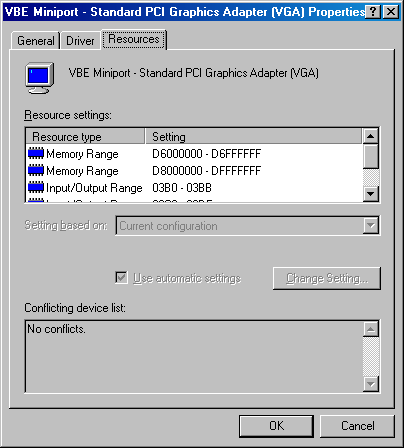

- #Standard svga driver how to
- #Standard svga driver drivers
- #Standard svga driver driver
- #Standard svga driver full
Click Finish, then reboot the virtual machine when prompted.After all devices have been detected, click the Details button to list the detected non-Plug and Play devices.Select No, the device isn't in the list.After Windows 98 has completed booting, start the Add New Hardware wizard from the Control Panel.Select the Virtual Machine hardware profile.
#Standard svga driver driver
The AMD PCNET driver is installed, followed by the IDE controller drivers.

Shut down Windows 98 and reboot the system.Click OK to close the System Properties dialog box.You may also want to rename the Original Configuration profile to Physical Machine. Name the profile Virtual Machine, then click OK.Highlight the Original Configuration profile, then click Copy.Right-click the My Computer icon on the desktop, then select Properties.Boot Windows 98 natively (not in a virtual machine).For more details on hardware profiles, see Setting Up Hardware Profiles in Virtual Machines. Following these steps, you create separate hardware profiles for your virtual machine and your physical machine. The steps below assume you are using Windows 98 as one of the operating systems in a dual-boot or multiple-boot configuration.
#Standard svga driver how to
This section explains how to configure the video driver in a Windows 98 raw disk installation using VMware Workstation. Guest Operating System Booted from a Raw Disk If your graphic card was manufactured in 2007 and newer, try uninstalling the xserver-xorg-video-intel package and use the builtin modesetting driver ( xserver-xorg-core) instead.Features | Documentation | Knowledge Base | Discussion Forums
#Standard svga driver drivers
Installation of the proprietary "AMDGPU-PRO" graphics drivers published by AMD (Unsupported, generally poorer quality, and can cause instability with later system updates.
#Standard svga driver full
Installation of the free AMD/ATI graphics drivers (Recommended, typically the fastest and most stable, with full OpenGL and Vulkan support) Technical words can be used but explained. Also make sure that the appropriate firmware packages are up to date. If you get a fixed low resolution (like 1024 x 768) with no choice of higher resolution in GUI and/or xorg-server log errors with missing device (like (EE) open /dev/dri/Card0 no such file or device) and/or non starting display manager (sddm etc), make sure that your kernel is up to date (as the kernel has to recognize the graphics device). If you don't know your graphic card, visit hardware identification page to identify it, then find more information on its setup by matching it to one of the pages below. Almost all graphics cards have free and open-source drivers available in Debian, however some cards may have better compatibility and performance after installing proprietary firmware or proprietary drivers. This portal contains links to the various Debian wiki pages regarding graphics cards and their respective driver installation processes.


 0 kommentar(er)
0 kommentar(er)
